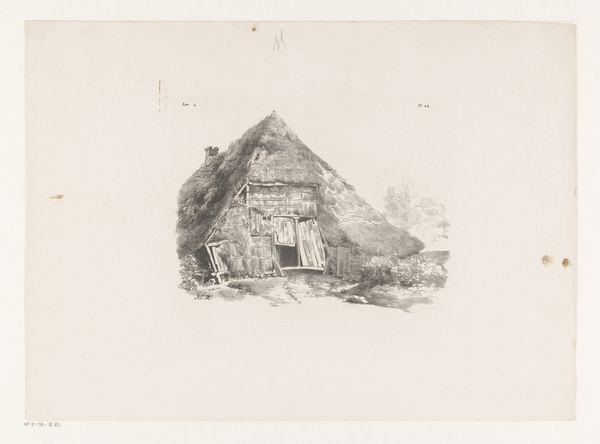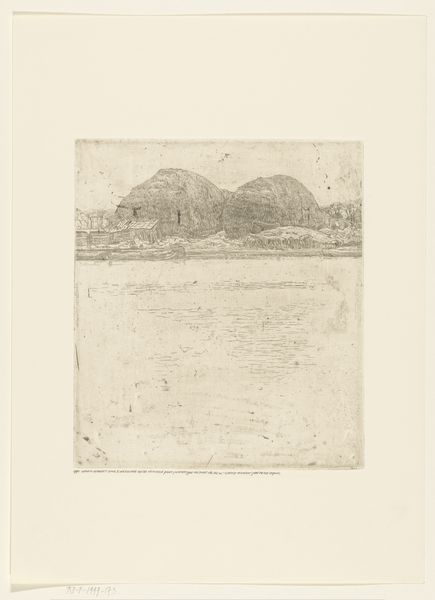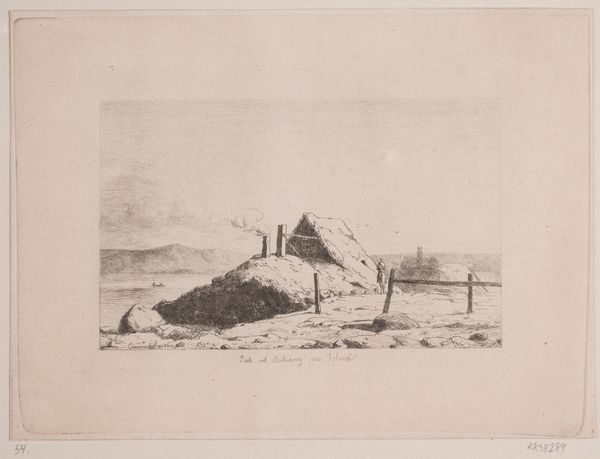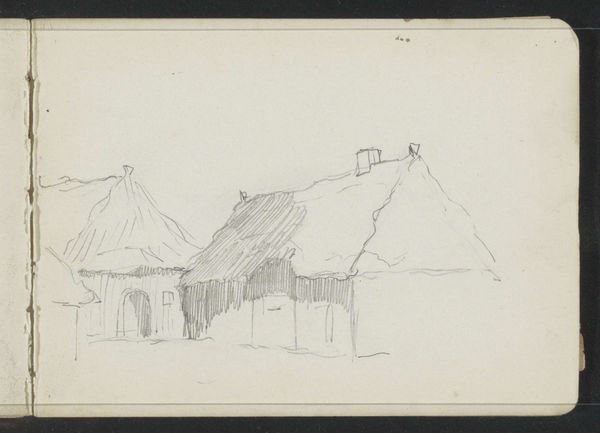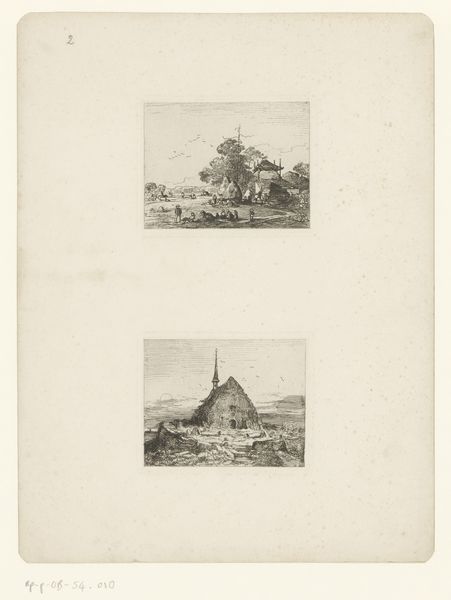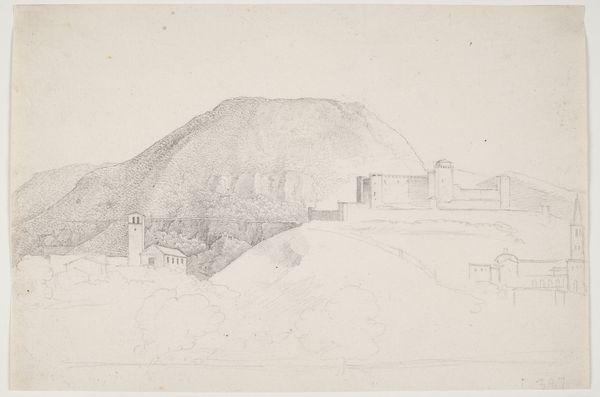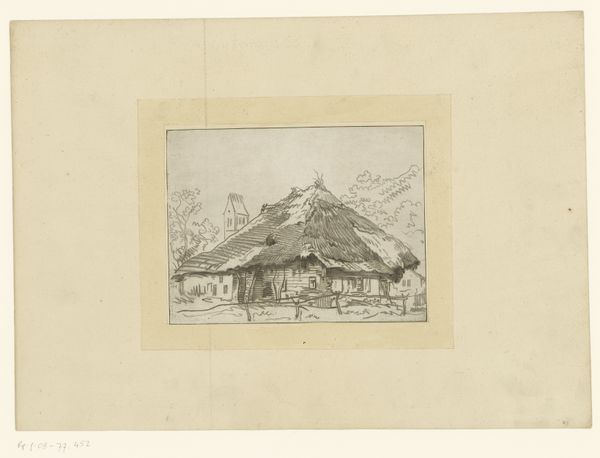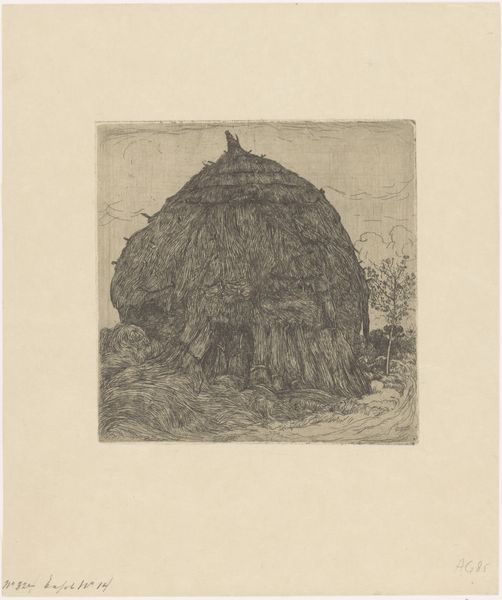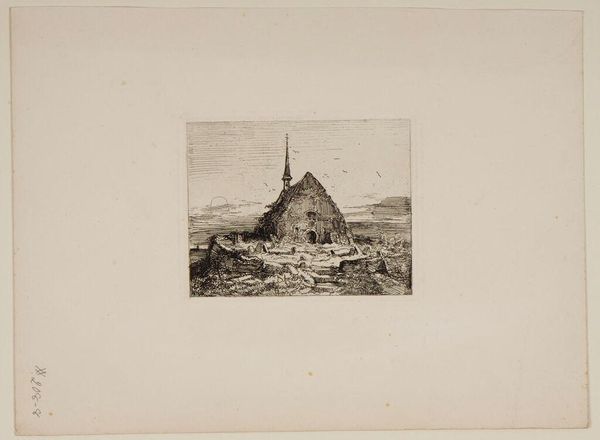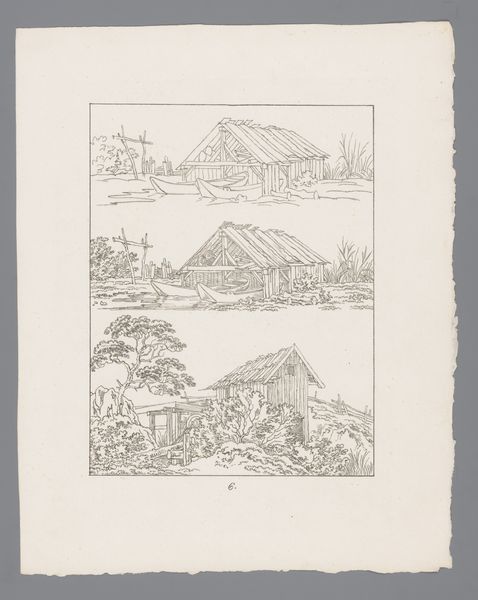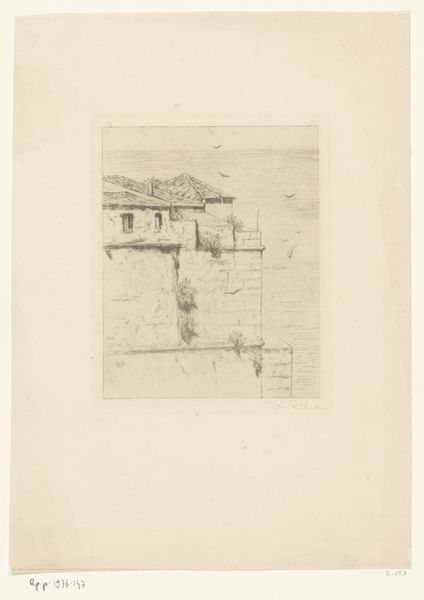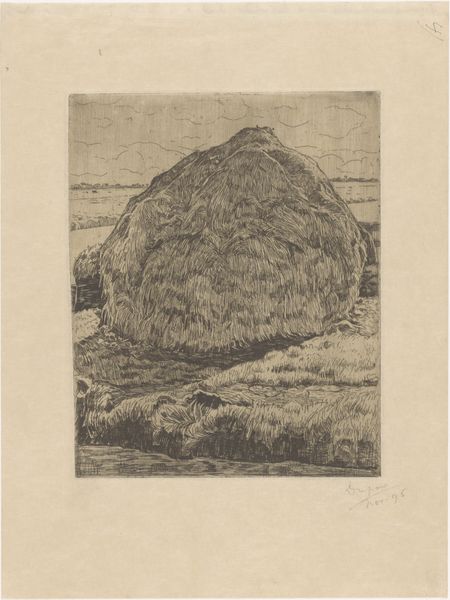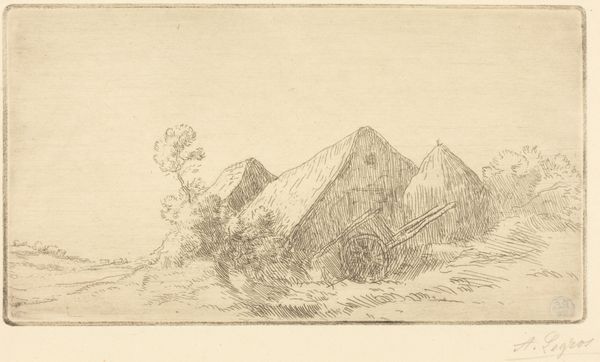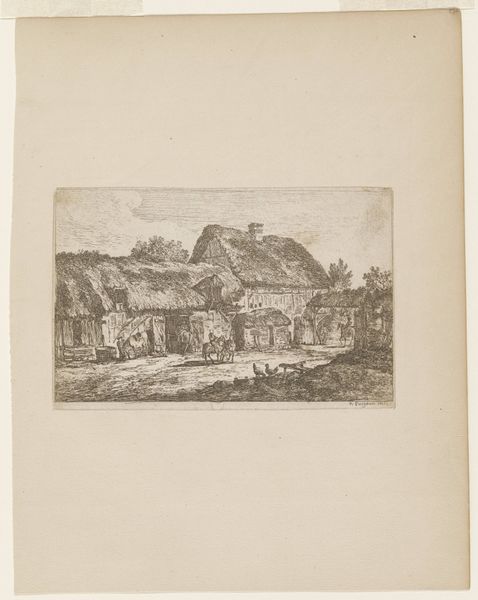
print, etching, pencil
#
ink paper printed
# print
#
etching
#
landscape
#
pen-ink sketch
#
pencil
Dimensions: height 166 mm, width 129 mm
Copyright: Rijks Museum: Open Domain
Curator: Before us we have Maurits van der Valk's "Hooiberg in een veld," which translates to "Haystack in a Field," created sometime between 1867 and 1935. It’s an etching, primarily rendered in ink on paper, now residing here at the Rijksmuseum. Editor: It has a certain pastoral tranquility to it, wouldn't you say? The composition directs the eye toward the haystack as a central form. It feels quite... grounding, despite the looseness of the line work. Curator: Indeed. Notice how the hatching and cross-hatching articulate the volume of the haystack itself, creating a tangible sense of mass. Van der Valk meticulously employed the etching technique to define both light and shadow. Editor: The haystack resonates deeply, doesn’t it? Throughout agrarian societies, the haystack has symbolized abundance, prosperity, and the fruition of labor. The artist uses it almost as a signifier for the hardworking agrarian spirit. Curator: Symbolism aside, consider the strategic placement of the haystack within the pictorial plane. It isn't merely a representational object, but a deliberate focal point, dictating spatial relationships between foreground and background elements through relative scale and tonal values. Editor: Scale-wise, its looming size could also suggest themes beyond just rural wealth. Perhaps reflections of impermanence, the hay being a temporal harvest. There’s a melancholic touch present. Curator: I can see that, particularly when interpreting the mark making as indicative of swift notation in nature. But ultimately, what stands out is the dialectic the artist sets up between detailed textural observation in the foreground and a reductive treatment in the background, the interplay creating an engaging compositional tension. Editor: Ultimately, I’m left considering how commonplace rural images served to instill societal memory. Van der Valk transforms this haystack into an object layered with collective cultural experience and values, more than mere documentation. Curator: I agree. Van der Valk masterfully exploits the intrinsic qualities of printmaking—its ability to generate and distribute multiple impressions. In that, it not only mirrors but underscores the cyclical character inherent in farming and agricultural heritage. Editor: A keen observation. That the imagery then can become universally recognized and repeated speaks to Van der Valk's effective, almost unconscious use of deeply rooted imagery.
Comments
No comments
Be the first to comment and join the conversation on the ultimate creative platform.
